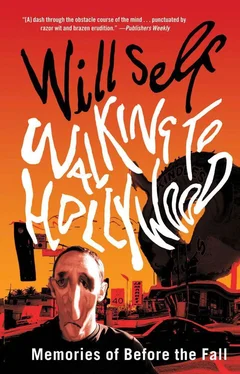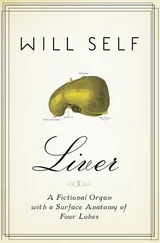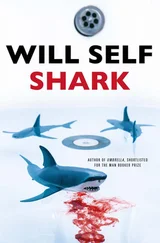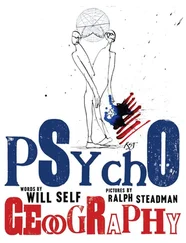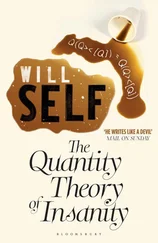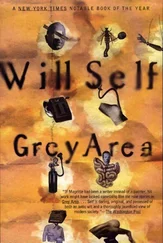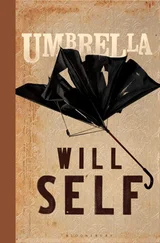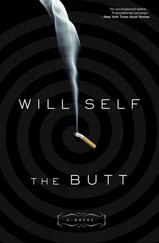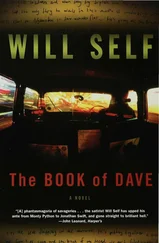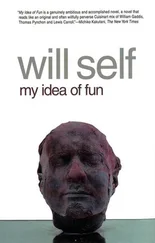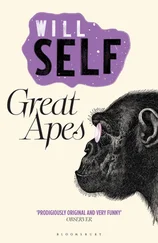Will Self - Walking to Hollywood
Здесь есть возможность читать онлайн «Will Self - Walking to Hollywood» весь текст электронной книги совершенно бесплатно (целиком полную версию без сокращений). В некоторых случаях можно слушать аудио, скачать через торрент в формате fb2 и присутствует краткое содержание. Год выпуска: 2011, Издательство: Grove/Atlantic, Inc., Жанр: Современная проза, на английском языке. Описание произведения, (предисловие) а так же отзывы посетителей доступны на портале библиотеки ЛибКат.
- Название:Walking to Hollywood
- Автор:
- Издательство:Grove/Atlantic, Inc.
- Жанр:
- Год:2011
- ISBN:нет данных
- Рейтинг книги:4 / 5. Голосов: 1
-
Избранное:Добавить в избранное
- Отзывы:
-
Ваша оценка:
- 80
- 1
- 2
- 3
- 4
- 5
Walking to Hollywood: краткое содержание, описание и аннотация
Предлагаем к чтению аннотацию, описание, краткое содержание или предисловие (зависит от того, что написал сам автор книги «Walking to Hollywood»). Если вы не нашли необходимую информацию о книге — напишите в комментариях, мы постараемся отыскать её.
Walking to Hollywood — читать онлайн бесплатно полную книгу (весь текст) целиком
Ниже представлен текст книги, разбитый по страницам. Система сохранения места последней прочитанной страницы, позволяет с удобством читать онлайн бесплатно книгу «Walking to Hollywood», без необходимости каждый раз заново искать на чём Вы остановились. Поставьте закладку, и сможете в любой момент перейти на страницу, на которой закончили чтение.
Интервал:
Закладка:
Camera Jeff is eyeing Mr Me quizzically, but before he can be supplied with any dialogue I turn on my zigzag legs, head on along Broadway, then swing into the foody-gloom of the Central Market. A hiatus while the interior loads, then: comforting down lights and exposed piping spring into being, together with a sawdust-strewn floor and fruit stalls piled high with Arnie hands of bananas. Lobsters scuttle in glass tanks, noodles steam in hanks, greenbacks spit from a freestanding ATM and the replicants mill and mutter
Lawrence G. Paull had it right in his production design for Blade Runner . Downtown LA was shuyu , a borrowed urban background for a formal garden of noirish planting, equally and elegantly stunted love and hate. Mr Me and I are both transfixed by a modular plastic display stand full of sour worms, gummy sour mix, neon sour worms, sour rings and cherry sours.
And so: the game is paused while I’m left to consider this Möbius strip of celluloid: in 2008 the lobby of the Bradbury Building has been beautifully renovated, yet in the early 1980s, seriously dilapidated, it served as the apartment block of bioengineering genius J. F. Sebastian. Paull and director Ridley Scott drenched Downtown LA in a toxic rain that fell from a sky sullied with the smoke of oily flare-offs, *and made of these seventy-odd city blocks an evaginated Central Market full of jabbering Asiatic proles spearing their neon sour worms with chopsticks. Overhead a dirigible wallows in the smog; its belly nudges the top storeys of the 1920s blocks and is wrapped round with a screen-sash upon which cherry-red lips part to receive more wriggling neon sour worms.
Harrison Ford hunts replicants in 2019 (1982). The replicants track down J. F. Sebastian to the Bradbury Building (1893, but built according to principles of urban architecture advanced by Edward Bellamy in his utopian novel Looking Backward: 2000–1887 ). To recap: in 1982 a Dutch movie star pretends to be an android in an 1893 building intended by its architect to be futuristic, but now impressed on an imagined future to leave the shape of the past… in the past.
Shortly before I left London I had watched a DVD *of Blade Runner with Sean Young, who, for the duration of the movie, played the role of my wife — or at least some of it, because I kept being interrupted by SMS text messages sent by Busner to my cell phone, a technology the ubiquity of which in 2019 wasn’t anticipated in 1982. Although, to be strictly fair, we could propose an alternative timeline, BR1, in which cell phones are everywhere in 2008, then entirely gone less than two decades later, to be replaced by older devices that are prized for their ability to both mediate and disjoint communication: answer phones.
Deckard, the blade runner, has an answer phone. I didn’t need to dwell on the cheesynthetic Vangelis soundtrack, or the dyed and shocked hairstyles of the women drinking blue neon cocktails in the bar where Daryl Hannah shakes her bootie, in order to find the movie dated; the answer phone’s flex was already lashed round my neck and it dragged me down through successive time currents, each one full of such anachro-snags, to where I type this on my dead mother’s Olivetti Lettera 22 typewriter, perfectly aware that you — perhaps in 2019 — are entirely at a loss to understand what so exercises me.
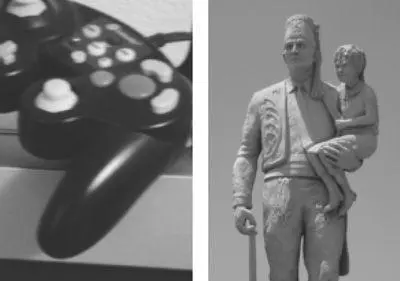
For as long as I’d been visiting Los Angeles the funicular alongside the Angel’s Flight had been out of order. Anyway, I didn’t want to take that route up Bunker Hill: boring through bank lobbies and shopping concourses, climbing flights of concrete stairs rising from parking lots to become the crenulated underside of freeways, the cobblestoned embankments of which are strewn with the discarded mattresses of the homeless. No, I had no desire to extract a core sample of this power-midden, with its bottom layer of grandiose clapboard, which, by the 1930s, had festered into the boarding houses where John Fante’s young men typed and diddled; I had no wish to expose the Otis Chandler stratum, or the unholy alliance of Westside movie Democrats and Downtown propertocrats that sat on top of it.
Instead, I schlepped up 5th Street in the malodorous twilight. I had panned 360 degrees since the October evening when I mooted the death of film with the gay comedienne at the Café Pinot, and no matter how ceaselessly the city retro-fitted itself with its own futurity, there was nothing it could do with the 35-storey-high mirrored gas tanks of the Westin Bonaventure Hotel, a structure I had last gazed upon in its guise as the Atrium in Los Santos. Having been soundly thrashed by my son, CJ, in a game of Grand Theft Auto: San Andreas , I lay on the sidewalk and watched him disappear into its lobby accompanied by a bevy of bitches in skin-tight micro-skirts. Still, what can you expect from an entire world a mere 13.7 miles square? One in which the omniscient deity of narrative has been abandoned, pumped full of pixels in a back alley, leaving everyone to run amok, minumental masters of their own fate?
Once I’d checked in, I stopped to chat with Felipe at the concierge desk — he was still wielding his pencil, still embroidering the gold thread of fantasy on to the uniform straitjacket of a less than congenial reality. There had, he said, been an amusing incident the week before, when one of the delegates to the Integrated Systems Convention tripped while fetching yet another muffin from the coffee stand and fell into the fountain, triggering a geyser that surged up, racing the glass elevator, until he was suspended, screaming, high above the lobby. When after twenty minutes the manager charged with choking off the jet nervily jerked the stopcock, the systems delegate was dead on arrival at Level 1, floating face down in the carbonated pool, while his moribund internal monologue fizzled out altogether.
That evening, I was the only diner in a Japanese restaurant on Level 6. I ate beef teriyaki in a woody nook, peering between paper screens at a carved and ornamented bar that gaped like a mouth full of gold crowns. I’d had indigestion before I started eating, and with each mouthful I considered: would that this — which Frederic Jameson has defined as ‘the spatialization of culture under the pressure of organized capitalism’ — didn’t taste so fucking bad. Farting like a cannibalistic cow in a clover field, I shifted the heavy, plush-seated chair so that it pounced on my own feet with its claw ones.
All revved up, all four stomachs swollen with bio-fuels, I jetted the lift up to the twenty-third floor, then lay stranded across the bed in my room. It had been quite a day. I thought back to that moment in early afternoon, when, crossing Grand, en route from the Shrine Auditorium to the Coca-Cola Bottling Plant, I had my first clear sight of the Hollywood Hills. By rights there should have been contentment; for here was the long view that my feet, scraping away layer after layer of paving, bitumen and concrete, had exposed: the pointed breasts of the slumbering giantess, dreaming of a city of angels, radiant as Klieg lights.
Not this time. It had been the cab ride at Heathrow that had done it — a scant half-mile of rubber rolling through the tunnel to the terminal building had erased entirely what should always be written on the body: the land’s enduring love for those human feet that had strived through the eons so as to be able to walk upon it. And so the Buckinghamshire lanes didn’t debouch into Century Boulevard, and the Grand Union Canal didn’t feed into the Los Angeles River. It bore down on me as I washed my underpants in the sink, then hung them up to dry on the shower rail, that my entire strategy had been devised not simply to repel the filmic, but to tape back together the Pangaea that had been cut up by the movies.
Читать дальшеИнтервал:
Закладка:
Похожие книги на «Walking to Hollywood»
Представляем Вашему вниманию похожие книги на «Walking to Hollywood» списком для выбора. Мы отобрали схожую по названию и смыслу литературу в надежде предоставить читателям больше вариантов отыскать новые, интересные, ещё непрочитанные произведения.
Обсуждение, отзывы о книге «Walking to Hollywood» и просто собственные мнения читателей. Оставьте ваши комментарии, напишите, что Вы думаете о произведении, его смысле или главных героях. Укажите что конкретно понравилось, а что нет, и почему Вы так считаете.
